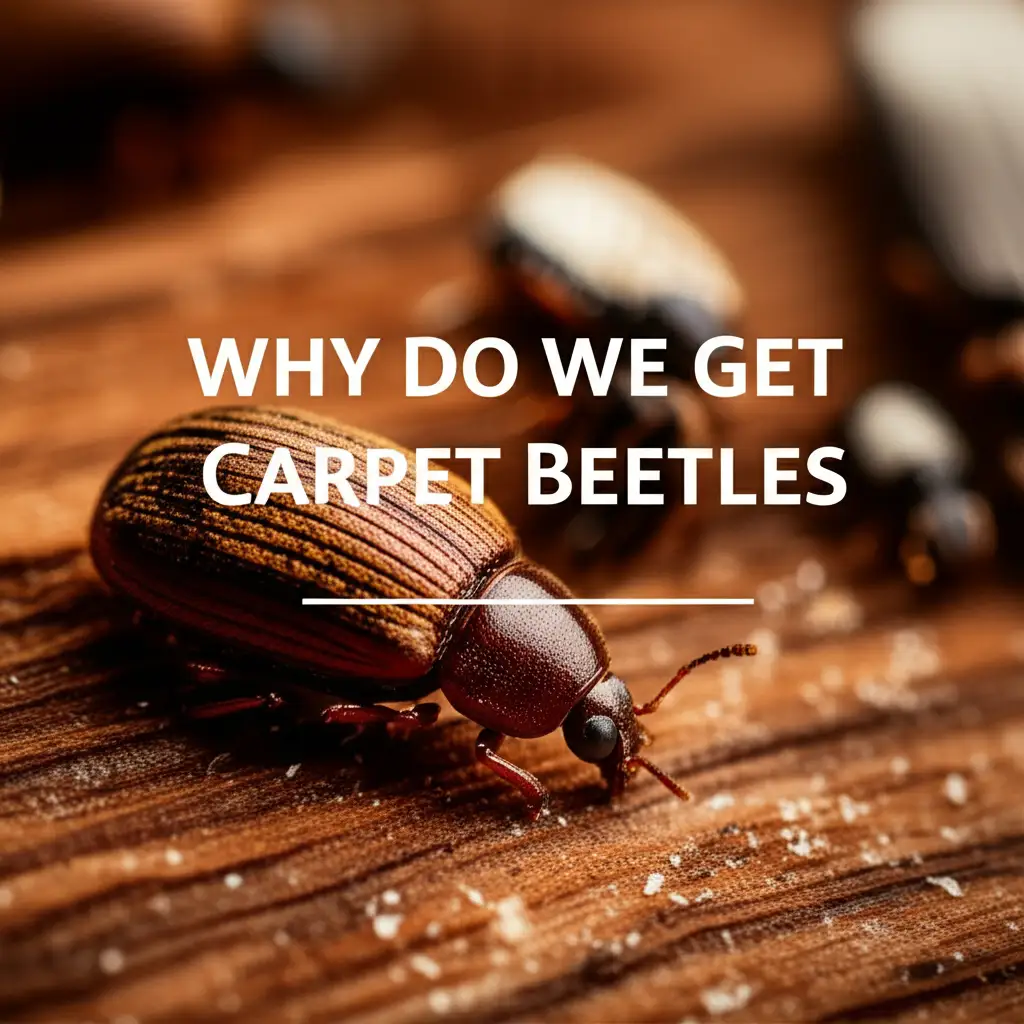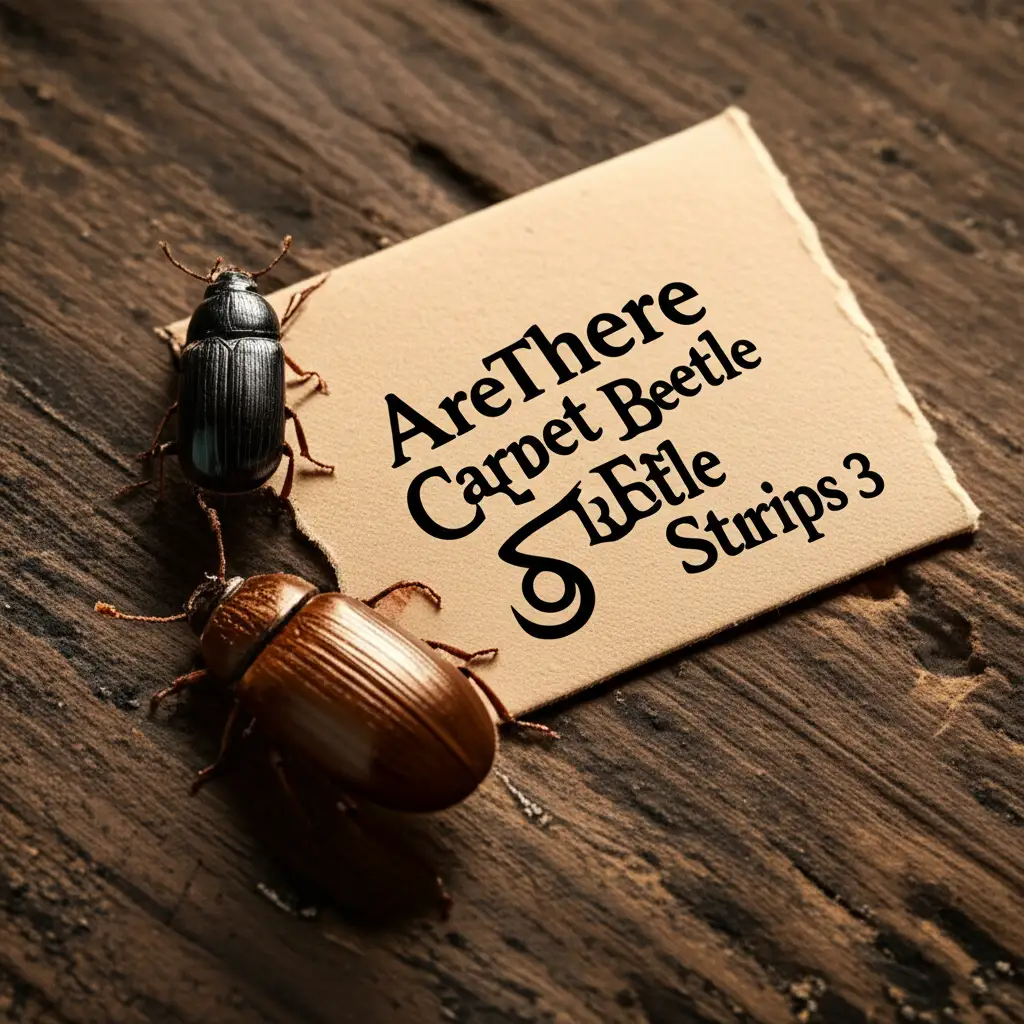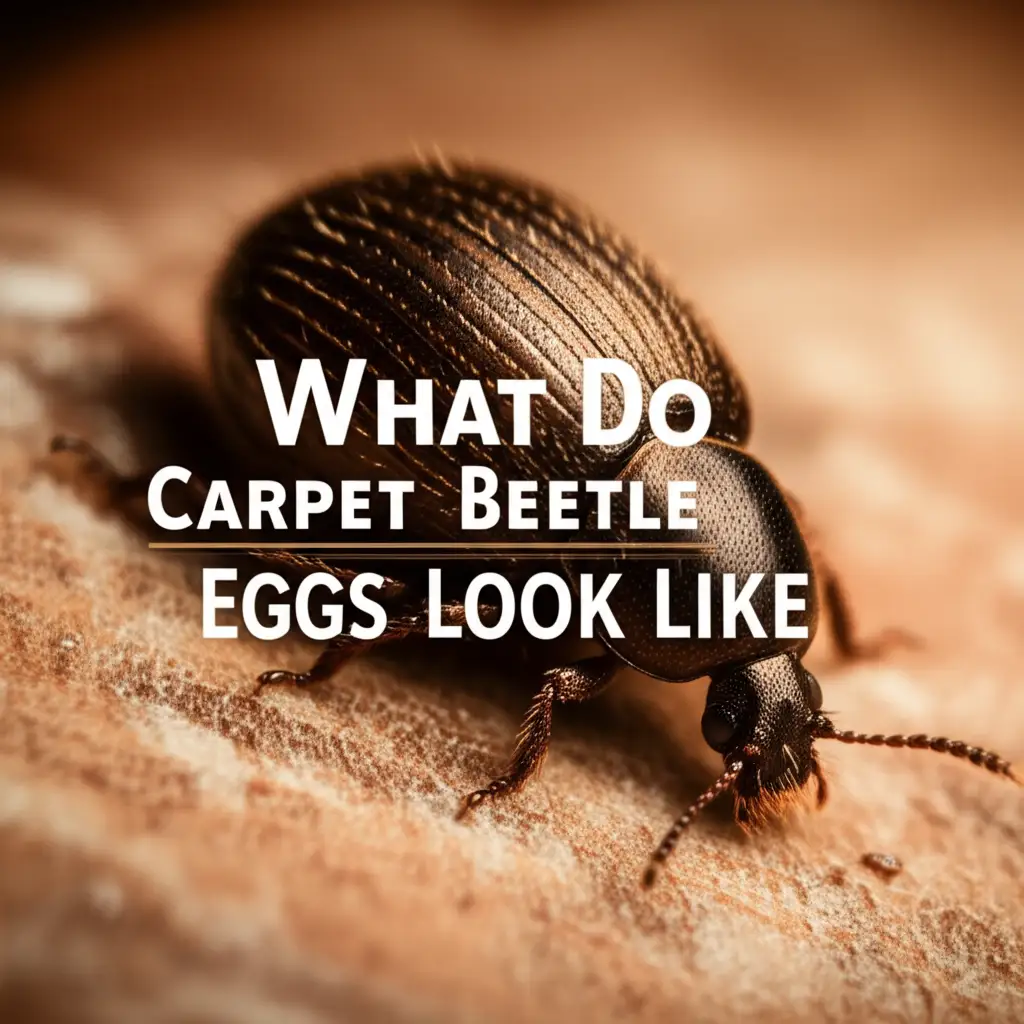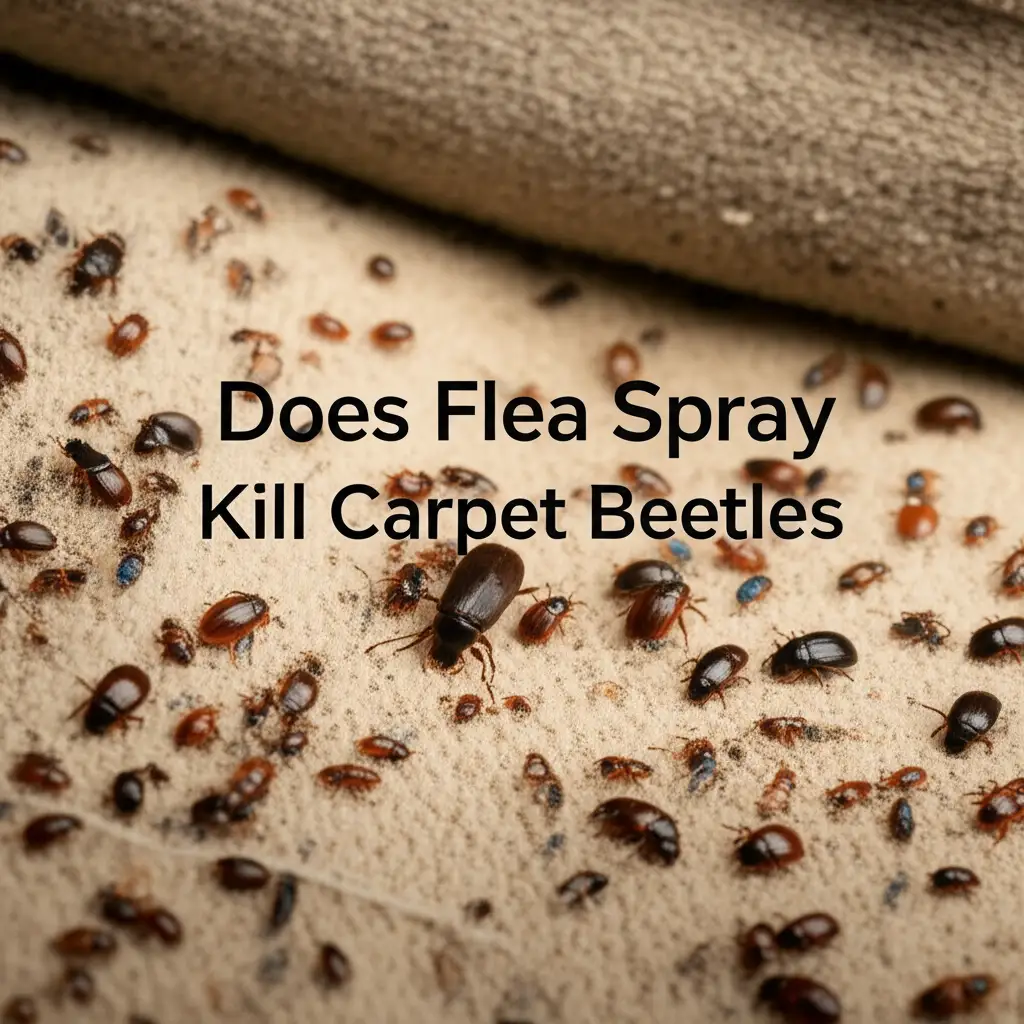· Elira Thomsen · Pest Control · 21 min read
Do Carpet Beetles Eat Clothes
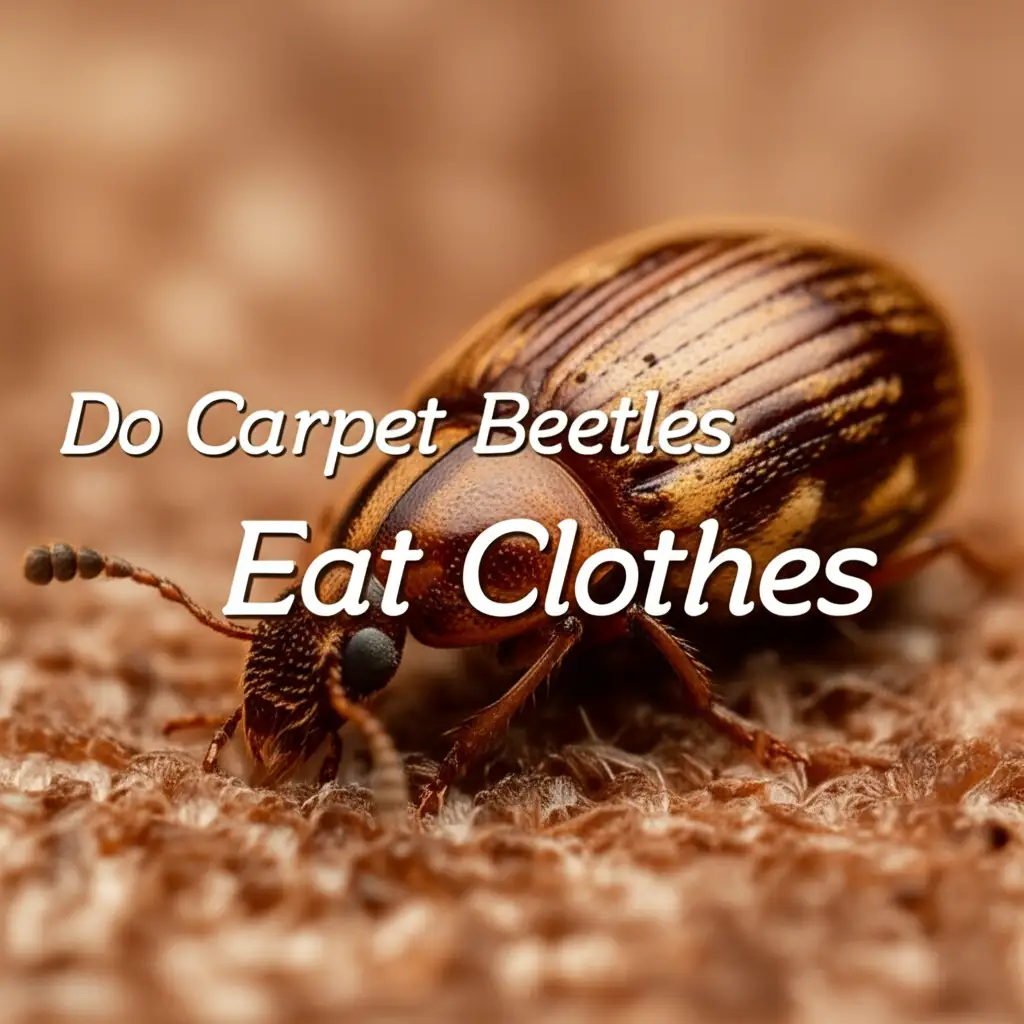
Do Carpet Beetles Eat Clothes? Uncovering the Truth
Have you ever pulled out a favorite sweater or an old blanket only to find tiny, irregular holes? You might wonder what caused this damage. Many people suspect moths, but another common household pest, the carpet beetle, is often the true culprit. When asking, “Do carpet beetles eat clothes?”, the answer is a resounding yes, or more accurately, their larvae do. These small insects can cause significant damage to your wardrobe and other textiles.
Carpet beetles are tiny, but their feeding habits impact natural fibers. Understanding these pests is crucial for protecting your belongings. This article will explore what carpet beetles eat, how to spot their damage, and practical steps to remove them. We will also discuss methods to prevent future infestations. My goal is to help you keep your clothes safe from these fabric-destroying insects.
Takeaway
- Carpet beetle larvae eat natural fibers found in clothes, not the adult beetles.
- They cause irregular holes, shedding, and weakened fabric.
- Cleanliness, proper storage, and pest control are key to prevention.
Do carpet beetles eat clothes? Yes, carpet beetle larvae actively feed on natural fibers found in clothing. They target materials like wool, silk, leather, feathers, and fur. Synthetic fabrics are generally safe unless they contain food stains or blends with natural fibers.
Understanding Carpet Beetles and Their Diet
It is important to understand the life cycle of carpet beetles to know why they damage clothes. Adult carpet beetles generally feed on pollen and nectar outdoors. They do not eat fabric. The real danger to your clothes comes from their larvae. These larvae are tiny, hairy, and worm-like creatures. They require protein for their development.
These larvae seek out animal products to consume. This includes wool, silk, fur, feathers, and leather. My own experience has shown me that even dust bunnies and pet hair can sustain them. This means that any neglected area in your home can become a breeding ground. They love dark, undisturbed places. Knowing what attracts them helps in prevention.
The Life Cycle of a Carpet Beetle
Carpet beetles go through four stages: egg, larva, pupa, and adult. The larval stage is the one that causes damage.
- Eggs: Female carpet beetles lay tiny, white eggs in secluded spots. These spots often include cracks in floors, air ducts, or even directly on natural fibers like clothing. Eggs hatch within 7 to 35 days.
- Larvae: This stage is the most destructive. Larvae are often reddish-brown or black. They have bristles or hairs on their bodies. They feed for several weeks or even months. They can live up to two years in this stage if conditions are right.
- Pupae: Once a larva has eaten enough, it transforms into a pupa. This stage can last from 1 to 3 weeks. It often occurs within the last larval skin.
- Adults: Adult carpet beetles emerge from the pupal stage. They are typically oval-shaped and vary in color depending on the species. They then seek mates and lay eggs, continuing the cycle.
This extended larval stage means they can cause continuous damage for a long time. They are often active for months before you even notice them. This silent activity makes them difficult to detect early.
What Attracts Carpet Beetles to Your Home?
Carpet beetles enter homes through various means. They can fly in through open windows or doors. They also hitch rides on cut flowers, furniture, or even used clothing. Once inside, they look for food sources and safe places to lay eggs.
Common attractants include:
- Natural fibers: Wool carpets, silk clothing, leather items, and feather pillows are prime targets.
- Animal products: Pet hair, dead insects, lint, and food crumbs also attract them.
- Dark, undisturbed areas: Closets, attics, under furniture, and storage boxes provide ideal hiding spots.
Understanding these attractants helps you identify high-risk areas in your home. You can then focus your cleaning and prevention efforts there. For more information on why these pests invade your home, you might find it useful to read about why do we get carpet beetles. This can give you deeper insights into their entry points and habits.
What Fabrics Do Carpet Beetles Prefer?
Carpet beetles are not picky eaters when it comes to natural fibers. However, they do have a strong preference for certain materials. This preference relates directly to their need for keratin, a protein found in animal products. This means your expensive wool suits and cashmere sweaters are at high risk.
They also target less obvious items. For instance, my old fur coat, stored in the back of the closet, showed signs of damage. Any item of clothing or textile made from animal-derived materials can be a meal for carpet beetle larvae. Synthetic fabrics are generally safe from their appetite.
High-Risk Materials
These are the materials carpet beetle larvae are most likely to damage:
- Wool: This includes wool carpets, rugs, blankets, sweaters, and suits. Wool is a very common target.
- Silk: Silk ties, dresses, and scarves are vulnerable. The smooth texture does not deter them.
- Cashmere and Alpaca: These luxurious wools are highly susceptible due to their fine fibers.
- Fur: Fur coats, hats, and trims on clothing provide excellent food sources.
- Feathers: Down comforters, pillows, and feather-filled jackets are also at risk.
- Leather and Suede: Jackets, shoes, and bags made of animal hide can be damaged.
- Felt: Felted items, often made from wool, are also attractive to them.
These materials contain the specific proteins carpet beetle larvae need to grow. They will chew through these fibers, leaving holes and weak spots. The damage often looks like irregular holes, unlike the cleaner holes left by clothes moths.
Low-Risk and Safe Materials
Some materials offer natural resistance to carpet beetles. These are generally fabrics that do not contain animal proteins.
- Cotton: Pure cotton items are rarely damaged. However, if cotton items have food stains or are blended with wool, they can become targets.
- Linen: Like cotton, pure linen is generally safe.
- Synthetics: Polyester, nylon, rayon, acrylic, and spandex are usually safe. These materials do not provide the necessary nutrients for larvae.
- Blended Fabrics: This category is tricky. If a fabric blends synthetic fibers with a significant amount of wool or silk, it can still be at risk. The larvae will target the natural fiber components. For example, a wool-blend sweater could still be eaten.
It is important to check labels when storing clothes. Even a small percentage of wool in a blend can attract them. This knowledge helps you prioritize which items need special care during storage.
Beyond Clothing: Other Targets
Carpet beetles do not limit their diet to clothes alone. They are general scavengers. Their name comes from their tendency to infest carpets. They can also damage other household items.
Other common targets include:
- Carpets and Rugs: Especially those made of wool or with natural fiber backings.
- Upholstery: Furniture covered in wool, silk, or other natural materials.
- Draperies: Curtains made from natural fibers or blends.
- Taxidermy and Animal Specimens: Stuffed animals, insect collections, and preserved specimens are at high risk.
- Pet Beds: These often contain shed pet hair, which is a food source.
- Stored Foods: Some species, like the varied carpet beetle, can infest dried foods, grains, and pet food.
- Dust and Lint: Accumulations of dust, lint, and pet hair in corners and under furniture provide ample food.
My personal experience confirms that regular vacuuming and cleaning of all areas, not just where clothes are stored, is essential. These pests are very good at finding any available food source.
Identifying Carpet Beetle Damage on Clothes
Finding holes in your clothes is a frustrating experience. It is important to know if carpet beetles caused the damage. Their damage often looks different from that caused by clothes moths. Knowing the difference helps you choose the right pest control method. I once mistook moth damage for beetle activity, which delayed effective treatment.
Carpet beetle damage usually appears as irregular holes. They might also leave behind tell-tale signs like shed skins or tiny fecal pellets. These clues help confirm their presence.
What Does Carpet Beetle Damage Look Like?
Carpet beetle larvae chew through fabrics, leaving distinctive marks. Here are key indicators of their presence:
- Irregular Holes: Unlike the clean-cut holes made by clothes moths, carpet beetle holes are often uneven in shape and size. They can appear anywhere on the fabric.
- Thinning or Bald Patches: On items like wool carpets or fur, you might notice areas where the fibers are thinned or completely missing. This looks like a bald spot.
- Frayed Edges or Seams: Larvae often start feeding in less visible areas, like seams or under collars.
- Shed Larval Skins: As larvae grow, they shed their skins. These are small, brown, husk-like casings. You might find them in drawers, closets, or on the damaged fabric itself.
- Tiny Fecal Pellets: These are very small, dark, sand-like droppings. They often blend into the fabric but are a clear sign of activity.
- Actual Larvae or Beetles: Finding the larvae themselves is the most definitive sign. They are small, hairy, and move slowly. Adult beetles might also be seen near windows, as they are attracted to light when ready to exit.
I always inspect the entire garment, front and back, and check seams carefully. The damage can sometimes be subtle at first.
Differentiating from Clothes Moth Damage
It is easy to confuse carpet beetle damage with clothes moth damage. Both pests target natural fibers. However, their damage patterns differ:
- Clothes Moths: Clothes moth larvae create more defined, often circular holes. They also spin silken tubes or cases on the fabric. These cases contain their droppings and silk. You will often see the adult moths flying around, or pupal cases stuck to surfaces.
- Carpet Beetles: As mentioned, carpet beetles leave irregular holes. They do not spin silk tubes. Instead, you find shed skins and tiny fecal pellets. Adult carpet beetles are less likely to be seen flying around indoors compared to moths.
If you see flying insects, they are likely clothes moths. If you see tiny, crawling, hairy “worms” and irregular holes, you likely have carpet beetles. Understanding these differences helps in planning your pest removal strategy.
Where to Look for Damage
Carpet beetle larvae prefer dark, undisturbed areas. This means your stored clothes are particularly vulnerable.
Key places to inspect for damage and signs of activity include:
- Closets: Especially items rarely worn or stored at the back. Check wool coats, blankets, and suits.
- Drawers: Items in bottom drawers, or those not often opened, are at risk.
- Storage Boxes and Containers: If natural fibers are stored away for long periods, larvae can thrive.
- Under Furniture: Lint, dust, and pet hair accumulate here, providing food and shelter for larvae.
- Carpets and Rugs: Inspect under heavy furniture or in corners where vacuuming is infrequent.
- Attics and Basements: These areas are often dusty and undisturbed, creating ideal conditions.
My routine now includes regularly checking these spots. Even a quick glance can help you catch an infestation early. Early detection is crucial for minimizing damage and making removal easier.
Finding the Source of a Carpet Beetle Infestation
Discovering damaged clothing is only the first step. To truly eliminate carpet beetles, you must find their main breeding source. Without addressing the source, the problem will likely return. These pests are excellent at hiding, so a thorough search is necessary. I learned this the hard way after repeatedly finding new damage.
The source often involves an undisturbed area with plenty of food. This could be anywhere from a forgotten old rug to a dusty corner in your closet. Finding the main source allows you to focus your cleaning and treatment efforts effectively.
Where Carpet Beetles Hide
Carpet beetles are secretive creatures. They prefer dark, quiet places where they can feed and lay eggs without disturbance.
Common hiding spots include:
- Under furniture: Especially under heavy items like beds, sofas, and dressers. Dust, lint, and pet hair accumulate here, providing a continuous food source.
- In closets and drawers: Particularly in the back or bottom, where clothes are rarely moved. They love to get into stored items like seasonal clothing, blankets, and old suitcases.
- Along baseboards and floor cracks: These small crevices offer protection and a place for eggs. Dust and debris often gather here.
- Behind wall voids or insulation: If there are old bird nests or dead insects, carpet beetles might infest these hidden spaces.
- In air ducts and vents: These areas can collect dust, lint, and insect debris.
- Around windowsills: Adults are attracted to light, so you might see them near windows. They might also lay eggs in nearby curtains or rugs.
- In stored pet food or dried goods: Some species, like the varied carpet beetle, also infest pantry items.
My advice is to start your search in areas with the most visible damage. Then expand outwards.
Inspecting Potential Breeding Grounds
A systematic approach helps you find the source. You need to inspect various items and areas thoroughly.
Here’s how to conduct your inspection:
- Empty closets and drawers: Remove all clothing and items. Examine each garment for holes, shed skins, or larvae. Look closely at seams and folds.
- Vacuum thoroughly: Use a powerful vacuum cleaner with attachments. Go along baseboards, under furniture, inside drawers, and along carpet edges. Pay attention to cracks and crevices. Dispose of the vacuum bag immediately after use, or empty the canister outside.
- Inspect carpets and rugs: Lift the edges of wall-to-wall carpets. Check the padding underneath. For area rugs, roll them up and inspect both sides. Look for thinning or bald patches.
- Check upholstered furniture: Examine the underside of cushions and the frame of sofas and chairs. Look for signs of activity in the fabric folds.
- Examine stored items: If you have boxes of old clothes, blankets, or even taxidermy, inspect them carefully. These are common sources for ongoing infestations.
- Look for dead insects or animal nests: Rodent nests or old bird nests in attics or wall voids are prime breeding spots. Carpet beetles feed on dead insects and animal remains. If you find such a nest, remove it carefully.
- Check air vents and ducts: Remove vent covers and look inside for dust, debris, or insect activity.
Remember that adult beetles are often found near windows as they try to leave the house. Finding adults does not mean the source is near the window. It means they are emerging from an internal breeding site.
Finding the source is the most critical step for successful long-term control. Once you know where they are coming from, you can apply targeted treatments.
Effective Methods to Eliminate Carpet Beetles from Clothing
Once you have identified a carpet beetle infestation, taking action is crucial. Simply washing clothes might not be enough. You need to employ specific methods to kill the larvae and eggs embedded in your fabrics. My own battle with these pests taught me that a multi-pronged approach works best.
The goal is to eliminate all life stages of the beetle from your clothes. This prevents them from re-infesting your wardrobe or spreading to other parts of your home. Combining heat, cold, and thorough cleaning helps ensure success.
Treating Infested Clothing and Textiles
There are several effective ways to remove carpet beetles from your clothes. Choose the method best suited for the fabric type.
Washing with Hot Water:
- Wash all infested items in hot water. The water temperature should be at least 120°F (49°C) for a minimum of 20-30 minutes. This temperature kills larvae and eggs.
- Check fabric care labels first. Some delicate items might not tolerate hot water.
- Use a strong detergent. This helps dislodge any remaining larvae or debris.
- For items that cannot be wet-washed, consider other methods.
High Heat Drying:
- After washing, dry items on the highest heat setting that the fabric allows. Heat kills any remaining larvae or eggs.
- A full cycle in a hot dryer (at least 30 minutes at high heat) is very effective.
- Again, check care labels to prevent shrinking or damage.
Freezing:
- For delicate items that cannot be washed or exposed to high heat, freezing is an option.
- Place infested items in a sealed plastic bag. Remove as much air as possible.
- Place the bag in a freezer at 0°F (-18°C) or colder for at least 72 hours (3 days). Some sources recommend up to two weeks for full certainty.
- The extended cold temperature kills larvae and eggs. After freezing, remove the items and brush them gently to remove any dead larvae or debris.
- You might wonder if you can use a microwave for this. You cannot microwave fabric to kill carpet beetles. Microwaving fabric can cause fire and damage the clothing. For more specific information, check out can you microwave fabric to kill carpet beetles.
Dry Cleaning:
- Professional dry cleaning is effective for items that cannot be washed or frozen. The chemicals used in dry cleaning kill all stages of carpet beetles.
- Inform your dry cleaner about the carpet beetle infestation. They can take appropriate precautions.
- This is a good option for wool suits, silk dresses, or delicate antique textiles.
Steaming:
- A handheld garment steamer or a fabric steamer can kill surface larvae and eggs with high heat.
- Pass the steamer slowly over all surfaces of the fabric, ensuring thorough heat penetration.
- This method is good for items like upholstered furniture or curtains that are difficult to move.
Cleaning the Infested Area
Treating the clothes is only half the battle. You must also clean the areas where the clothes were stored.
- Vacuum Thoroughly: Vacuum all carpets, rugs, and upholstered furniture. Use a crevice tool to get into corners, cracks, and along baseboards. Vacuum inside dresser drawers and closets. My rule is to vacuum every nook and cranny.
- Dispose of Vacuum Contents: Immediately after vacuuming, seal the vacuum bag in a plastic bag and dispose of it outdoors. If you have a bagless vacuum, empty the canister into a sealed bag outside. Wash the canister with hot, soapy water.
- Wipe Surfaces: Wipe down shelves, drawers, and closet walls with hot, soapy water. A mixture of vinegar and water can also be effective.
- Clean Under Furniture: Move furniture and clean the areas underneath. These are common hiding spots for larvae feeding on dust and pet hair.
For specific information on what these pests dislike, you can look up what do carpet beetles hate. This might help you find natural repellents or cleaning agents that discourage them.
Chemical Treatments (Use with Caution)
Pesticides are generally a last resort for clothing infestations. They are more commonly used for treating large structural infestations.
- Insecticide Dusts/Sprays: For cracks, crevices, and wall voids, professional-grade insecticide dusts or residual sprays might be needed. Always follow label directions strictly.
- Insect Growth Regulators (IGRs): These products interfere with the beetle’s life cycle. They prevent larvae from developing into adults. They are often used in conjunction with other treatments.
- Professional Pest Control: If the infestation is widespread or persistent, consider calling a professional. They have access to stronger treatments and expertise in locating hidden sources. They can assess if chemical treatments are necessary and apply them safely.
Remember, safety is key when using any chemical treatment. Keep pets and children away from treated areas. Also, be aware that some common pest control products, like flea sprays, might not be designed for carpet beetles. For instance, you can check if does flea spray kill carpet beetles is effective for this specific pest.
Preventing Future Carpet Beetle Infestations in Your Wardrobe
Preventing carpet beetle infestations is far easier than eliminating them. Once you have cleared an existing problem, implementing preventive measures is critical. My routine now includes several habits that keep these pests at bay. These steps focus on cleanliness, proper storage, and vigilance.
A clean and well-maintained home reduces the attractiveness of your living space to carpet beetles. It also limits their food sources. Prevention is an ongoing process, not a one-time task.
Regular Cleaning and Maintenance
Cleanliness is your best defense against carpet beetles. They thrive in dusty, undisturbed areas.
- Frequent Vacuuming: Vacuum all carpets, rugs, and upholstery regularly. Pay special attention to edges, corners, and under furniture. These are common spots where lint, dust, and pet hair accumulate. Dispose of vacuum contents immediately outside.
- Dusting and Wiping: Dust and wipe down all surfaces, including shelves in closets and drawers. Use a damp cloth to remove any potential food sources or eggs.
- Laundry Routine: Wash clothes regularly, especially those made of natural fibers. Don’t leave soiled or sweaty clothes lying around, as food stains can attract pests.
- Pet Hair Control: If you have pets, brush them regularly to reduce shedding. Vacuum pet bedding often, as it collects hair and dander.
- Address Spills and Food Crumbs: Clean up food spills promptly. Don’t eat in bed or near fabric furniture where crumbs can accumulate.
Maintaining a clean environment removes the food and hiding spots that carpet beetles need to survive.
Proper Clothing Storage
How you store your clothes significantly impacts their vulnerability to carpet beetles.
- Wash or Dry Clean Before Storage: Always clean natural fiber items before storing them for long periods. Food stains, body oils, and residual sweat can attract pests.
- Use Airtight Containers: Store valuable or rarely used natural fiber items in airtight plastic bins or garment bags. Look for containers with secure seals. This physically prevents beetles from getting in.
- Avoid Cardboard Boxes: Cardboard boxes are not airtight. Beetles can chew through them or squeeze into small gaps.
- Do Not Overpack Closets: Air circulation is important. Overpacked closets create dark, undisturbed pockets where pests can hide. This also makes cleaning difficult.
- Cedar and Mothballs (Use with Caution):
- Cedar: Cedar can repel adult carpet beetles due to its natural oils. Use cedar chests, hangers, or blocks. However, its effectiveness decreases over time as the scent fades. Sanding cedar surfaces or using cedar oil can rejuvenate the scent. Cedar does not kill existing infestations.
- Mothballs (Naphthalene/PDCB): These chemicals kill insects. However, they have a strong odor and toxic fumes. Use them only in truly airtight containers and away from living areas. Many people avoid them due to health concerns and unpleasant smell.
Remember that proper storage is key for long-term protection. I always make sure seasonal clothes are sealed away.
Sealing Entry Points and Vigilance
Preventing beetles from entering your home and regularly checking for signs are crucial steps.
- Seal Cracks and Gaps: Seal any cracks or gaps around windows, doors, and baseboards. This prevents adult beetles from entering from outside.
- Install Window Screens: Ensure window and door screens are in good repair. This stops adult beetles from flying in during warmer months.
- Inspect New Items: Before bringing new or used furniture, rugs, or clothing into your home, inspect them carefully for any signs of pests.
- Monitor for Signs: Regularly check your clothes, especially those made of natural fibers, for any early signs of damage or larvae. Pay attention to areas you don’t frequent often.
- Control Outdoor Populations: Reduce outdoor attractants around your home. This includes keeping outdoor lights off at night if they attract insects, or using yellow bug lights. These measures help limit their entry into your home.
Being proactive and consistent with these preventive measures greatly reduces the risk of carpet beetle infestations. If you are wondering about how temperature affects them, knowing if carpet beetles like cold might help in prevention strategies, as extreme temperatures can deter or kill them.
When to Call a Professional for Carpet Beetles
Most small carpet beetle infestations can be handled by homeowners using the methods outlined above. However, there are times when a professional pest control service becomes necessary. This is especially true if the infestation is large, persistent, or hard to locate. I learned to recognize when the problem was beyond my DIY capabilities.
Calling a professional ensures the problem is handled safely and effectively. They have the expertise and tools to deal with severe infestations.
Signs You Might Need Professional Help
Knowing when to call an expert saves you time, money, and further damage to your belongings. Look for these signs:
- Widespread Infestation: If you find carpet beetles in multiple rooms or on numerous items, it indicates a large problem. A widespread infestation means the beetles have established multiple breeding sites. This is often too much for DIY efforts.
- Persistent Reoccurrence: You have tried various home remedies, cleaned thoroughly, and applied treatments, but the beetles keep coming back. This suggests a hidden or deeply embedded source that you cannot reach.
- Difficulty Locating the Source: You’ve searched everywhere, but you cannot find the main breeding source. Professionals are trained to locate hidden infestations, even within wall voids or obscure areas.
- Damage to Structural Elements: If you suspect damage to subflooring, insulation, or other inaccessible parts of your house, professionals are needed. They can assess and treat these areas without causing structural issues.
- Sensitivity to Pesticides: If you or someone in your household has allergies or sensitivities to common cleaning products or pesticides, a professional can offer safer alternatives or apply treatments in a controlled manner.
- Time Constraints: If you do not have the time to perform the thorough cleaning and repeated treatments required for DIY removal, a professional service can provide a faster solution.
My personal experience shows that ignoring these signs only makes the problem worse. Early professional intervention can save your belongings.
What a Professional Pest Control Service Does
Professional pest controllers have specialized knowledge and tools. They offer a comprehensive approach to carpet beetle eradication.
Here’s what you can expect from a professional service:
- Thorough Inspection: They will conduct a detailed inspection of your home. They will identify the species of carpet beetle and pinpoint all active infestation


